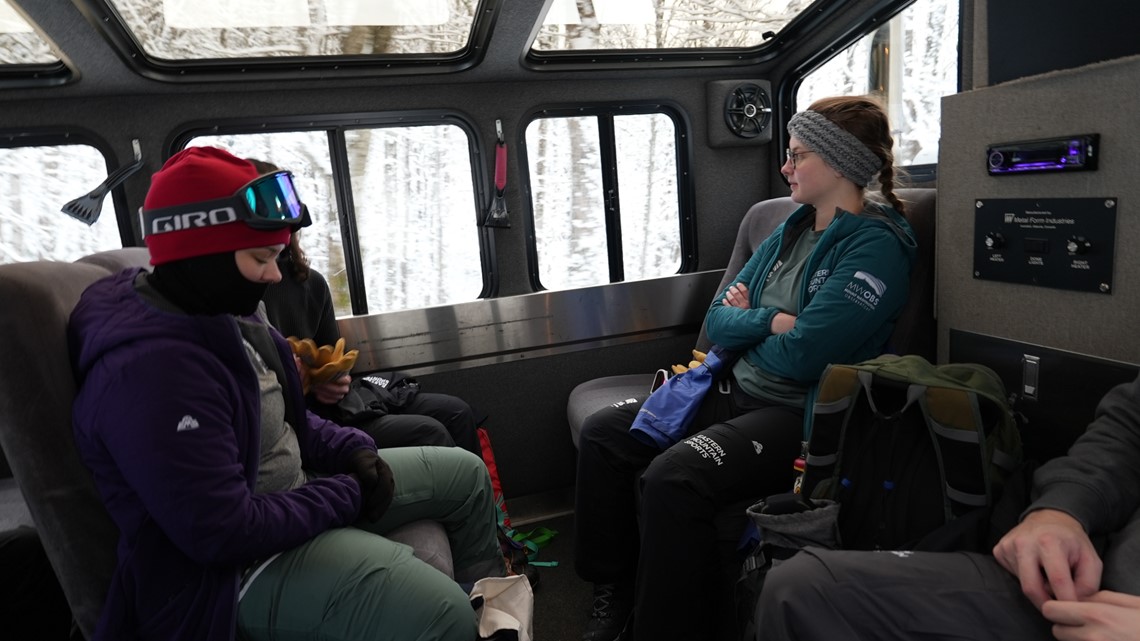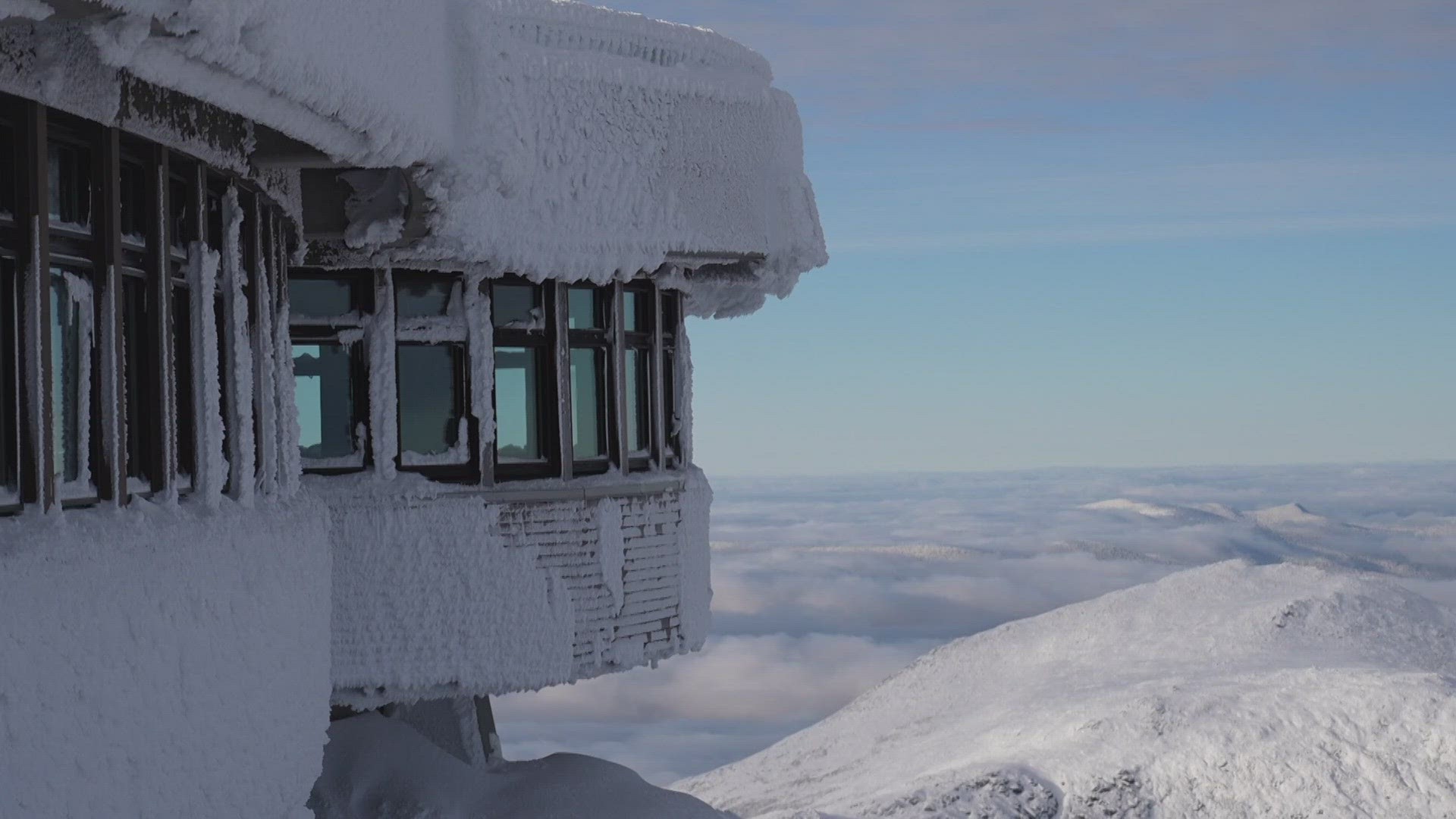JACKSON, N.H. — There is a group of scientists spending the holidays in what some consider a winter wonderland, while others might call it a nightmare.
The Mount Washington Observatory’s motto is, “home to the world’s worst weather,” and it has statistics to back that up.
On April 12, 1934, observers recorded 231 mile-per-hour winds on their instruments, which were then independently checked for accuracy. It was a world record that would stand for 62 years. In the winter, current observers told us, they experience hurricane winds every other day.
On a December morning, we rode up with four observers during shift change. They don’t plow the auto road in the winter, so it was a bumpy, noisy, 90-minute ride in the passenger cab of a snowcat. Alex Branton, a Florida native, was one of the observers making the trek.
“You can’t really explain it to friends and family. ‘Oh, I left work and it was three degrees and the wind was 100 miles per hour,’” she said during the ride up. “But they don’t really know what that’s like.”


The observers spend eight days at the summit – at 6,288 feet, it’s the highest point in the Northeast – and then six days off.
Despite the odds, we arrived at the summit to blue skies, 110 miles of visibility, and winds settling around 10 miles per hour – a rare sight to behold.
Working 12-hours shifts, the observers monitor data, educate the public, and go outside every hour to take measurements – often using handheld thermometer contraptions and simple precipitation collectors. Observer Charlie Peachey said they’re more accurate and reliable than electronic alternatives.
With the aforementioned extreme winds, measurable snow arriving early in the fall, and rime ice forming and growing on the sides of objects, the summit can look like a different planet altogether. But this place tells us a lot about our planet, and our corner of it.
“We are collecting a very unique data set crucial to understanding climate change at a unique environment like this,” Peachey explained. “What happens up here is eventually gonna trickle down to the valley.”
In addition to doing research many people rely on, this is, of course, the observers’ home a week at a time. A couple – Mike and Sue – have been volunteering at the observatory for 20 years. They cook meals, bake cookies, and haul up a live Christmas tree each winter. The observers have cable, streaming services, and a Nintendo Switch. They also take turns buying groceries and feeding the observatory’s cat, Nimbus.
Observer Francis Tarasiewicz believed Nimbus is the station’s 18th cat. It’s a long tradition and likely a necessary one, along with the baked goods and video games. Life can get lonely way up there.
“It could be hard to be away from family and friends for the holidays,” he said, sitting next to the lit Christmas tree and petting Nimbus before the grey cat wandered off. “That’s one part of the job; it can be difficult at times. You really become aware of your crew members and where everyone’s at. I think, instinctually, you want to cheer everyone up.”


It is a crucial team on which many New Englanders down below rely for information and education. The observers we met also believe this job is a meteorologist’s dream.
“It really quickly becomes, I don’t know, like a home in the clouds,” Tarasiewicz mused.
Even as we joined him and the outgoing team returning back down to Earth that afternoon, he looked forward to rejoining his colleagues and their unique office.

